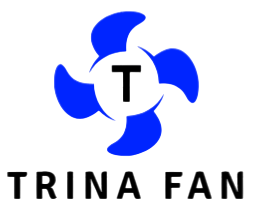The Importance of Proper Adhesives in Auto Glass Replacement
When it comes to auto glass replacement, the choice of adhesive plays a critical role in ensuring the safety, structural integrity, and longevity of the repair. Proper adhesives are essential for securing windshields, windows, and other glass components in vehicles, providing not only a clear view but also serving as a vital component of the car’s overall safety features. The adhesive used in auto glass replacement must meet rigorous industry standards to withstand various environmental factors, including temperature fluctuations, moisture, and road vibrations. One of the primary functions of automotive adhesives is to bond the glass securely to the vehicle’s frame. A strong bond is crucial, particularly for windshields, as they contribute to the vehicle’s structural integrity. In the event of a collision, a properly installed windshield can help maintain the shape of the cabin and protect occupants from injury. Additionally, windshields play a significant role in the deployment of airbags. Therefore, using high-quality adhesives that provide an excellent bond strength is paramount.

Moreover, the curing time of the adhesive is another critical factor in auto glass replacement. Different adhesives have varying curing times, which can affect how quickly a vehicle can be safely driven after replacement. Most manufacturers recommend a minimum curing time to ensure that the adhesive has fully set before the vehicle is exposed to stress. Rapid-curing adhesives have become increasingly popular, allowing for a quicker turnaround in windshield replacement oakland services while still meeting safety requirements. However, it is essential for technicians to follow the manufacturer’s guidelines carefully to ensure optimal performance. Environmental considerations also come into play when selecting adhesives for auto glass replacement. Many modern adhesives are designed to be environmentally friendly, reducing the release of volatile organic compounds VOCs and other harmful emissions. These eco-conscious products not only contribute to a healthier environment but also reflect the growing consumer demand for sustainable practices in the automotive industry. By choosing adhesives that align with these values, auto glass replacement shops can appeal to a more environmentally aware customer base.
In addition to safety and environmental concerns, the performance of adhesive under various conditions cannot be overlooked. Automotive adhesives must be resistant to UV radiation, temperature extremes, and moisture. For instance, windshields are constantly exposed to sunlight and extreme weather conditions, which can cause some adhesives to break down over time. High-performance adhesives are designed to resist these factors, ensuring that the bond remains intact throughout the life of the vehicle. Proper training and certification of technicians are also essential in the context of adhesive application. Even the best adhesive will fail if not applied correctly. Technicians must be knowledgeable about the specific requirements of different adhesives, including surface preparation, application techniques, and curing conditions. Professional training ensures that the installation process is carried out efficiently and safely, providing peace of mind to vehicle owners. In conclusion, the importance of proper adhesives in auto glass replacement cannot be overstated. They are crucial for ensuring the safety and structural integrity of vehicles, while also addressing environmental concerns.

 Being surrounded by peers who are facing similar challenges can foster a sense of understanding and camaraderie. Group therapy sessions and communal activities within these programs encourage teens to share their experiences, learn from others, and build supportive relationships. This shared experience can be incredibly validating and provide a foundation for lasting personal growth. Another key benefit of residential treatment is the opportunity for teens to learn and practice new coping skills in a controlled environment. Programs often incorporate various therapeutic modalities, such as cognitive-behavioral therapy CBT, dialectical behavior therapy DBT, and family therapy, to help adolescents develop healthier ways of thinking and behaving. These skills are not only crucial for addressing current issues but also for equipping teens to handle future challenges more effectively.
Being surrounded by peers who are facing similar challenges can foster a sense of understanding and camaraderie. Group therapy sessions and communal activities within these programs encourage teens to share their experiences, learn from others, and build supportive relationships. This shared experience can be incredibly validating and provide a foundation for lasting personal growth. Another key benefit of residential treatment is the opportunity for teens to learn and practice new coping skills in a controlled environment. Programs often incorporate various therapeutic modalities, such as cognitive-behavioral therapy CBT, dialectical behavior therapy DBT, and family therapy, to help adolescents develop healthier ways of thinking and behaving. These skills are not only crucial for addressing current issues but also for equipping teens to handle future challenges more effectively. Moreover, the rise of Delta-8 gummies highlights a broader trend in the cannabis industry towards innovative and user-friendly products. As more consumers explore the benefits of cannabinoids, the demand for diverse and accessible forms of cannabis consumption is increasing. Delta-8 gummies represent just one example of how the industry is evolving to meet the needs of a diverse consumer base, offering products that cater to different preferences and wellness goals. However, it is important to approach Delta-8 gummies with caution and awareness. While they offer many potential benefits, the regulatory landscape surrounding Delta-8 THC is still developing. As with any cannabis product, consumers should be informed about the legal status of Delta-8 in their area and ensure they are purchasing from reputable sources. Quality control and accurate labeling are crucial, as the lack of regulation in some areas can lead to variability in product potency and safety. In summary, Delta-8 gummies are making a significant impact on the cannabis edibles market, providing a novel option for both recreational and therapeutic use.
Moreover, the rise of Delta-8 gummies highlights a broader trend in the cannabis industry towards innovative and user-friendly products. As more consumers explore the benefits of cannabinoids, the demand for diverse and accessible forms of cannabis consumption is increasing. Delta-8 gummies represent just one example of how the industry is evolving to meet the needs of a diverse consumer base, offering products that cater to different preferences and wellness goals. However, it is important to approach Delta-8 gummies with caution and awareness. While they offer many potential benefits, the regulatory landscape surrounding Delta-8 THC is still developing. As with any cannabis product, consumers should be informed about the legal status of Delta-8 in their area and ensure they are purchasing from reputable sources. Quality control and accurate labeling are crucial, as the lack of regulation in some areas can lead to variability in product potency and safety. In summary, Delta-8 gummies are making a significant impact on the cannabis edibles market, providing a novel option for both recreational and therapeutic use.
 One of the primary advantages of Delta 8 THC flower is its potential to alleviate anxiety while promoting relaxation. Users often describe a sense of calm and well-being, which can be particularly beneficial for those grappling with stress or anxiety disorders. The calming effects of Delta 8 THC are attributed to its interaction with the endocannabinoid system, a complex network of receptors and neurotransmitters that plays a crucial role in regulating mood, stress responses, and overall mental health. Delta 8 THC’s therapeutic profile is complemented by its natural origin. Unlike synthetic pharmaceuticals, Delta 8 THC is derived from hemp, a plant with a long history of use in traditional medicine. This natural aspect appeals to individuals seeking alternatives to conventional medications, which can sometimes come with unwanted side effects or dependency concerns. By choosing Delta 8 THC flower, users can explore a more organic approach to managing anxiety, potentially reducing the need for more invasive or synthetic treatments.
One of the primary advantages of Delta 8 THC flower is its potential to alleviate anxiety while promoting relaxation. Users often describe a sense of calm and well-being, which can be particularly beneficial for those grappling with stress or anxiety disorders. The calming effects of Delta 8 THC are attributed to its interaction with the endocannabinoid system, a complex network of receptors and neurotransmitters that plays a crucial role in regulating mood, stress responses, and overall mental health. Delta 8 THC’s therapeutic profile is complemented by its natural origin. Unlike synthetic pharmaceuticals, Delta 8 THC is derived from hemp, a plant with a long history of use in traditional medicine. This natural aspect appeals to individuals seeking alternatives to conventional medications, which can sometimes come with unwanted side effects or dependency concerns. By choosing Delta 8 THC flower, users can explore a more organic approach to managing anxiety, potentially reducing the need for more invasive or synthetic treatments.